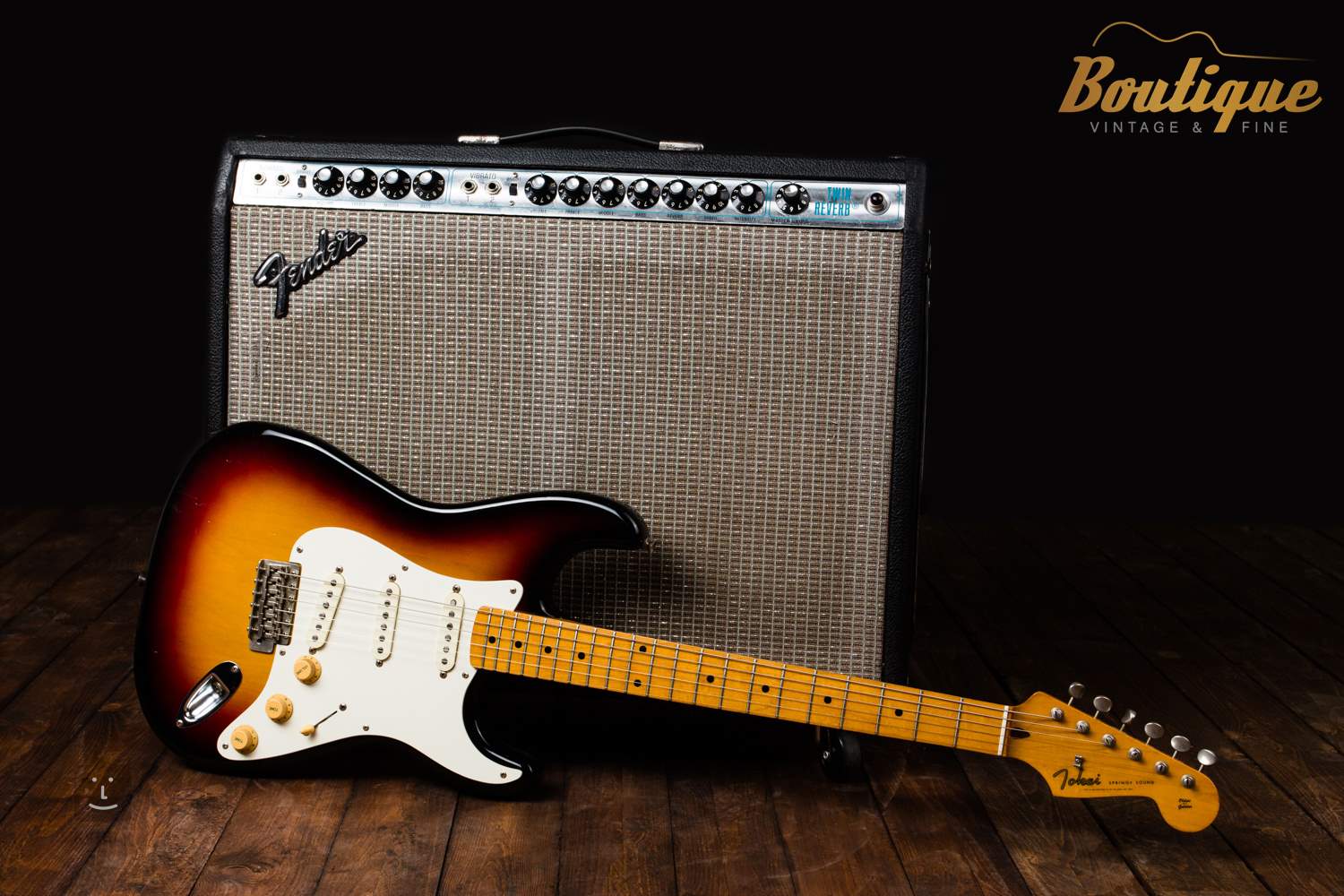
There were numerous other differences between the Tokai and Fender early ’60s Strat replicas, but they differed in the main because they were replicating Strats from different years – not because one or the other was physically less accurate. Even if the Tokai logo was removed from one of these (and that happened A LOT), it could be instantly distinguished from a Fender ’62 reissue on account of the ‘veneer’-type fretboard (as opposed to the ’62 reissue’s much thicker ‘slab’ board), and the pearloid dot position markers (as opposed to the ’62 reissue’s fake ‘clay’ dots).
Tokai springy sound single pickup code#
This type of 3-tone sunburst finish had the colour code YSOR, I believe. The original 3-ply scratchplate, the pickup covers and the knobs were straightforward white plastic. I still have a rare vintage catalogue from those days, and the following pictures are all from this source.Apart from the replacement nitrate scratchplate and aged plastic parts, this is how the ’64 rosewood board variant of the '80s TST-50 looks.
Tokai springy sound single pickup series#
The series after the Springy Sound is also great but less sought-after than the ones from before. The number was also the price in Japanese Yen (the ST50 cost 50,000 Yen, the ST80 was 80,000 Yen)īy the way, soon after the release of these Tokai Strats, Fender won a lawsuit so Tokai had to change the design of the spaghetti logo decal.

And – depending on the quality of the wood and the kind of laquer – there were models called ST50 to ST100. Those Springy Sound Strats were available in different variations: first there were copies of the maple neck Strats from the 50ies, and of a 1964 Strat, both in many different colours. (If you want an advice what to do with your money: buy …) I have often noticed a certain trend for Japanese vintage Strats over the last few years, I guess this is because noone can afford vintage Fenders anymore, but those Japanese guitars from the 70ies or very early 80ies were not only – at least in the case of brands like Greco, Tokai, Fernandes, the Squier JV series – of excellent quality and sound great, in addition they are about 30 years old which means the wood dried and became extremely resonant, and they often have that authentic relic look. I sold that guitar about six years later when I got a great old Fender Strat – something I regret today of course because meanwhile these guitars have a legendary reputation, and conesequently they are highly sought after, and prices went up (about 900 – 1,500 €). Fortunately this was about two weeks before Christmas, and I somehow got it managed that I got this guitar from all the money coming from different aunts, uncles and grandma’s. I was fourteen, and that was a lot of money (especially after I got my first guitar only one and a half year before, a 2nd-hand Fender Strat from 1976), much more than I had. I had to have this guitar, which was priced at 825,- German Marks (the equivalent of 420,- € /US $ 540). No question that I had to play that guitar: it also sounded much more like a vintage Strat than the contemporary Strats. But this Tokai had the classic small head, a white pickguard with white knobs, staggered vintage style pick-ups, a separate tremolo block, the correct kind of pickguard screws, a light alder body, and even a decal that looked like the old Fender spaghetti logo see pictues below) – in short, it was exactly like those legendardy old Fender Strats at a time when Fender was still building those infamous 70ies style Strats that were so heavy that they got the nickname boat anchor. The regular Strats still had that ugly large peghead that CBS had introduced in 1966, and at that time they all had black plastic parts. But besides the cool colour, there was something else that was unique: it was a replica of a 1964 Fender vintage Stratocaster, it really looked like a pre-CBS Fender. And on this shelf there was this elegant looking fiesta red Tokai Stratocaster. One day I visited the local guitar shop – something I did regularly, just to see and to play as many guitars as possible. Fender had dropped fiesta red eleven years before, in 1969, and in fact I had never seen a fiesta red Strat at all until then.

Red guitars were rare in the guitar shops – or rather non-existent.

Mark Knopfler was still associated with his red Fender Strats (although in fact he had just started to play Schecter that year). I noticed that a lot of people surf into this site because of these articles, so I want to release a fourth one, this time about the almost legendary Tokai Springy Sound Strats. I already wrote three articles about Japanese vintage Strats, an introduction and a portrait of the fiesta red and the pink metallic Squier JV.


 0 kommentar(er)
0 kommentar(er)
